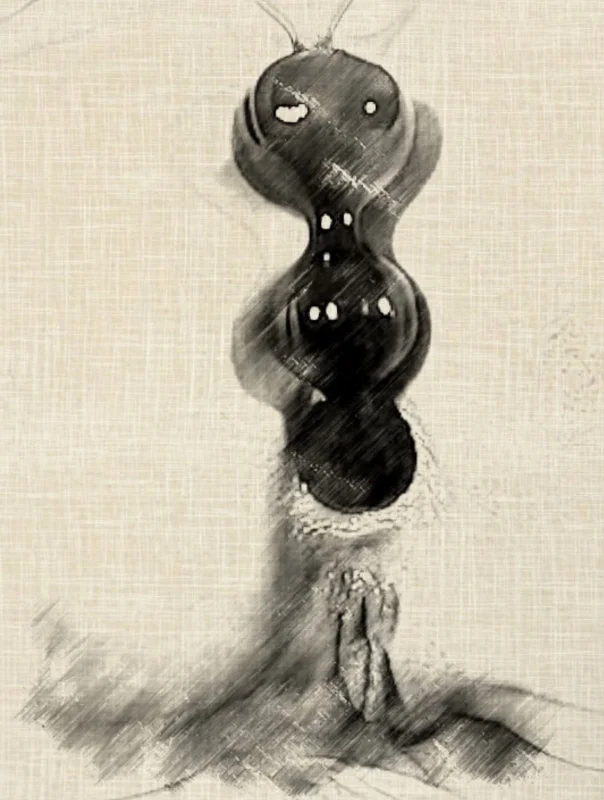2 years ago. December 29, 2021 at 11:27 PM
There are some baselines in kink that are very important. Consent, negotiation, trigger management, boundaries, communication, limits and aftercare. I have covered those topics already in other blogs I’ve released here as well as one of my books titled Kink for beginners. This chapter opens up and discusses the topic of safe words, safe sounds and safe movements.
WHAT ARE SAFE WORDS?
In kink, constant communication is a must. Play sessions are fluid. They can push our boundaries. They can lean on limits. They can expose us to new things that we may or may not enjoy. They can be fun, or they can make us slightly uncomfortable either physically, mentally or sometimes both.
Safe words are a safety tool predominantly used by submissives or bottoms. An important tool used to ensure that they can openly communicate with their Dominant, or other Top that they are playing with. Top is used in the sense of any type of player that controls the submissive / bottoms physical, emotional and / or mental state.
Safe words are used to convey how the bottom feels. It allows the Top to clearly understand if the bottom is comfortable in the current style of play, or if they are potentially approaching, pushing at or even crossing a boundary, whether that be physical, mental or emotional in context.
But safe words don’t just belong to the submissive or bottom. They can also be used by the Dominant or Top. Majority of the time, it will be a bottom that uses them, but in some cases, a Top can call a safe word. This can be because their emotional or mental state declines suddenly, they are asked to do something that they question, or they find themselves confronted with personal moral or ethical issues.
Morals are a very personal thing. For instance a sub may have religious fantasies. They may want to role play that they are seduced by a Pastor and fucked at the pulpit. The Top may be highly religious and this pushes personal moral boundaries. Or perhaps the sub likes calling her Top by a term such as Daddy. The Top may have personal issues about this and not like the use of that word.
Or perhaps the bottom wants to be fucked like an animal and asks to be humiliated and spat on or pissed on. Once again, this may surprise the Top, depending upon their personal moral standing. What might seem insignificant to one party, can cause serious internal triggers and concerns with another. Enter the use of safe words that protects both bottom and Top.
WHY USE SAFE WORDS INSTEAD OF JUST TALKING NORMALLY?
The use of words such as “No” or “Don’t do that” or “Stop” sound easy enough to use. However where play in kink gets blurred, is when a submissive pretends to not want something, or perhaps plays verbally with his/her partner, using “No” as a way to get the Dominant to actually push and do more. Or perhaps the bottom will tease the Top by saying “No” yet wanting the Top to actually ignore that plea and instead push them. The lines blur. This is where defined and set safe words work best.
WHAT SAFE WORDS SHOULD YOU USE?
This is an age old question. Some people have the belief that they should make up and use a word that they very rarely use, or that wouldn’t be used in any conversation piece. Whilst this is great in theory, when the heat of the moment occurs, and it is paramount that instant halt to play occurs, what if that negotiated word is forgotten by the bottom or the Top doesn’t recognise it.
An age old use of the traffic light system of green, yellow/amber, red has been a successful way of verbalising safe words that effectively work.
GREEN
This is a great way to convey the meaning that as a bottom, you are fine and that you are okay if it turns up a notch.
YELLOW / AMBER
Depending upon your part of the world, the middle traffic light is either called Yellow or Amber. Let’s use Yellow as the term for this example. Yellow lets the Top know that you are getting close to the limits of play that may be escalating, or has escalated, and that you are happy with the level it is at, but it’s time to perhaps calm a little. Not to stop the play, but to ease up a little.
Not just confined to physical limits either, where perhaps the pain of being spanked is at its acceptable threshold for you, but to spank harder would cause real and unwanted discomfort. It may be mental or psychological as well. It may be used where you are both experimenting with something that once triggered you and you trust the partner enough to try to overcome known triggers. Yellow can be used to quickly allow the Top to identify that you are now in a state, where fear has entered your mental state and you need to tread carefully.
An example of calling yellow on physical, would be the bottom saying “Yellow on that spanking. That’s beginning to feel uncomfortable.” The Top could then respond with “Are you able to take a few more spanks, or do you want me to slow down?” Or perhaps the pulling of the subs hair is a little too vigorous. Calling yellow on that will allow the Top to quickly readjust and lessen the impact, to ensure the mood isn’t lost from too much pain.
An example of calling Yellow in a sense of Mental or Psychological, would be the bottom saying “Yellow on the hand around my throat / wrists. I’m beginning to feel scared.” The Top could then respond with “Would you like me to let go or to continue lightly?”
RED
Red is a finite and instant safe word that halts the play. No questions asked at the time. It ends there and then. The type of play could have triggered physical problems, such as severe cramping or inflammation. Or perhaps ability to freely breathe was impacted. Or in the case of mental or psychological, something (not necessarily intentional from the Top) may have triggered a reaction such as fear or acute anxiety that pushes beyond acceptable limits for the bottom.
For instance, memories of past abuse from others may have surfaced from the way a Top grabs, manhandles or manipulates the bottom. Red signifies instant cease and desist and to go straight into aftercare mode. To make the bottom feel safe again by allowing the ability to calm down. Once calmed, conversation can occur between both parties to understand what occured, what caused the trigger or issue and how to avoid that occurring in future situations.
WHAT ABOUT WHEN YOU CANNOT SPEAK?
Safe words are great, but what about the times you are wearing a ball gag, a hood, a mask or some other item that restricts your ability to talk? Or what if the bottom is non verbal by nature and doesn’t actually talk? Or what if they are mute?
Many situations can cause the inability to talk. This is where safe movements and / or safe sounds come into play. It may be the simple motion of a hand or arm, or perhaps the bottom is holding an item that can be dropped that causes a sound (like a small ball with a bell inside it). Perhaps the bottom holds a squeaky toy that is squeezed when a trigger occurs.
Or perhaps you attach a couple of fishing bells onto the fingers of the bottom. Attach them with Velcro. The bottom wiggles those fingers hard and fast and holds them up to gain the attention of the Top. There are many ways that safe movements and safe sounds can be introduced. Just make sure you test them out before play begins, to ensure they work well enough to get the Tops attention.
WON’T USING A SAFE WORD KILL THE MOOD?
Who cares. Safety, negotiation and informed consent is the baseline of any play session in kink, whether experienced players or inexperienced. Anything can happen, especially when playing hard or rough on a physical level, or when edge playing with mental kinks. It may be that simple hair pulling triggers a rape that has been buried and forgotten from years or decades earlier. Safe words exist to protect both parties from the unexpected.
Yellow or Red is not always about the actions of the current play partner. Triggers can occur that cause ghosts from the past to appear. Where resistance occurs to use safe words, sounds or movements is normally from new or inexperienced Dominants or Tops. Those Dominants will often assume that calling Red has occured because of them, not understanding that past trauma can trigger negative emotions or psychological speed bumps.
Experienced Dominants or Tops will openly discuss and quite often insist on the use of safe words. This is to ensure the safety of the play partner. Experience allows the understanding of the importance of boundaries and negotiable and flexible play styles. Play that can escalate, reduce or stop where and when needed.
DID YOU FIND THIS ARTICLE INFORMATIVE?
If you found this article informative or educational, please comment and love the post as well as tell others about it and give them the link to read it. There can never be enough education in kink.








